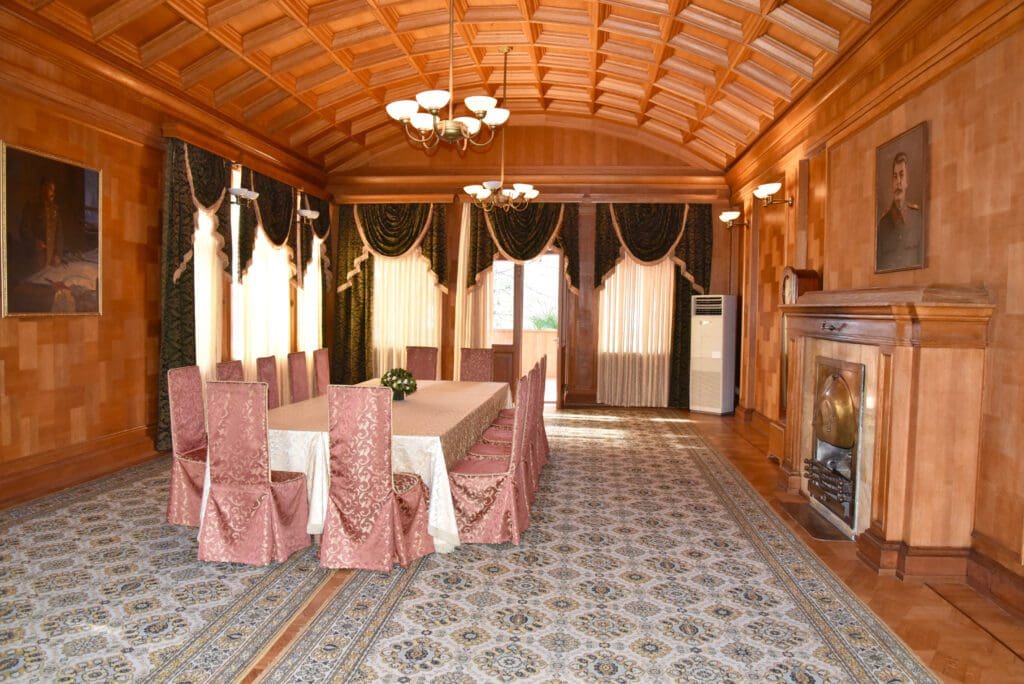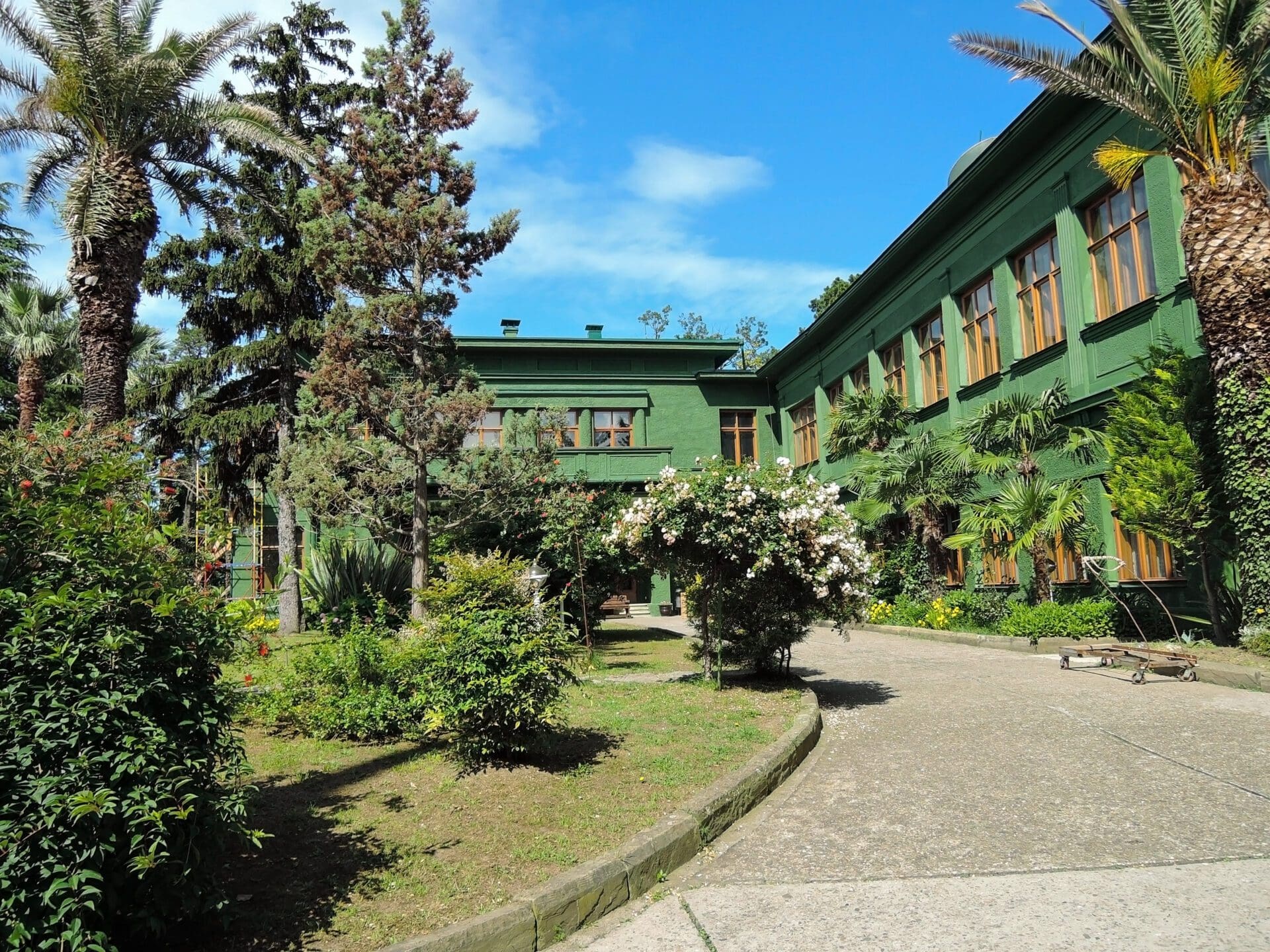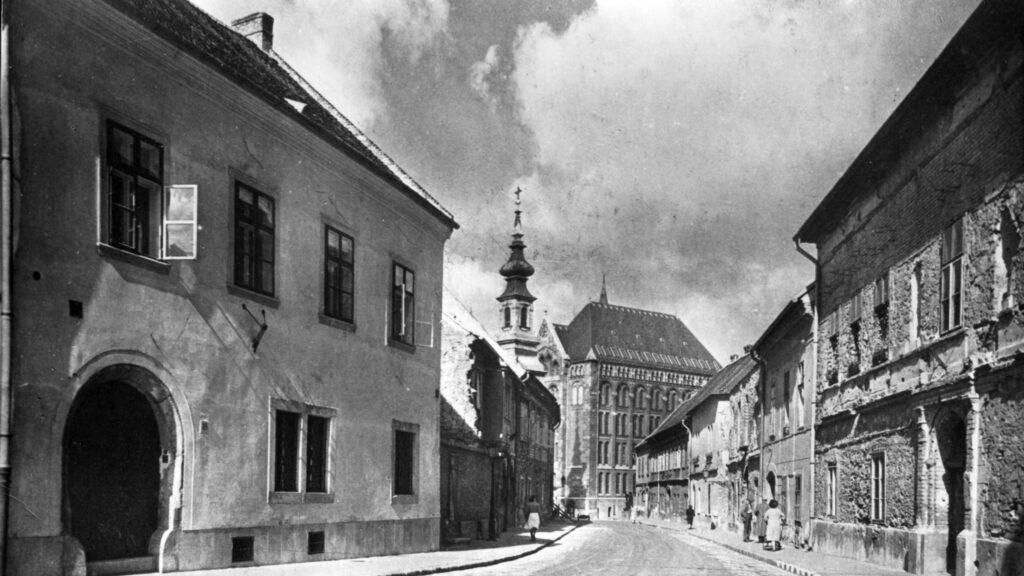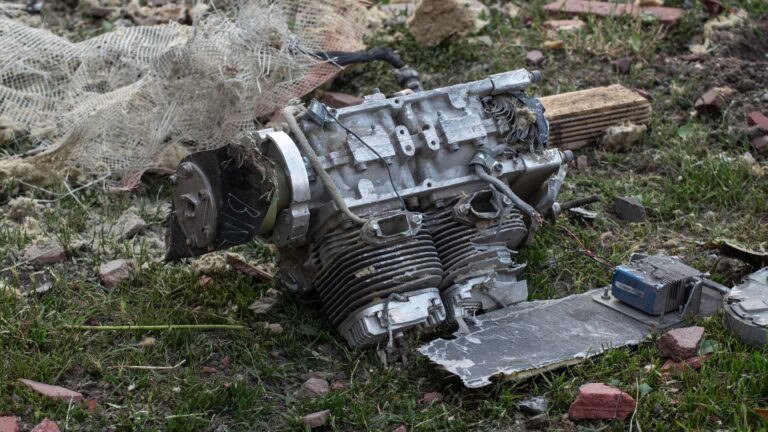While in Russia the southern city of Sochi is popular for its sea and ski resorts that offer a wide range of leisure activities both during the winter and the summer, for me, Sochi was the most interesting for Stalin’s dacha, hidden among the trees in the middle of the nearby forest. During short drive from the seashore to the mountain peak where the dacha is located, I could not help but think—he wants us dead even long after he had gone to his grave. The serpentine road leading up to the dacha is narrow and curvy, making the car ride nerve-wrecking. Once we had parked near the dacha, I soon realized that the residency is a quintessential testimony to the paranoia that governed the Soviet Union during the ruthless tyrant’s dictatorship.
The first thing that strikes visitors arriving at the dacha is its unusual green colour. Just like many other small details, the colour was chosen deliberately—this green painting helps the summer residence blend into the natural environment around it so that it cannot be seen from an airplane or from the high mounting peaks surrounding it. Indeed, when we climbed the nearby lookout tower, even knowing which way the dacha was located, we couldn’t spot it. The next unusual thing our guide highlighted was the iron flaps that cover each keyhole on the doors. The flaps are located both inside and outside, making sure no one could peep into the building or secretly listen to conversations that were taking place inside the house. The residence, which consists of multiple buildings, has a wonderful wooden interior. Originally, the wooden floors that softly creak under the weight of your steps were not covered with carpets so that Stalin could hear everyone walking about the house. although the complex was full of security guards, not even Stalin’s children were allowed to know in which room he would sleep on a given night—each day he slept in a different, randomly selected bedroom. By the end of the guided tour, I came to understand that the explanation for why every single one of his ‘most trusted’ advisors ended up being arrested sooner or later must have been his paranoic fear for his life.

The residence in Sochi is one of 20 dachas there were built for Stalin, and one of the five that he actually used. The dacha is equipped with a cinema (watching films was one of the most favourite of Stalin’s pastimes!), a chess room, a poolroom and a bathhouse. While Stalin often played pool (he even took private lessons to get better at it) he was ashamed of playing it in public, and the same went for bathing in public—he didn’t want to undress in front of others. It is actually not surprising that the dictator was afraid of displaying his lack of sports skills and of showing his body—the ‘great father’ of the country, whose depictions reflected an idealized masculinity, suffered from a series of disabilities. He was born with webbed toes, and one of his arms was injured in a childhood accident, so towards the end of his life he could barely move it. He also had smallpox scars all over his body, including on his face, and his lungs were damaged as well—while living in exile in Imperial Russian times, banished for his revolutionary socialist views, his health seriously deteriorated, and he could only whisper. To make up for this deficiency of his, the acoustics of the residence were designed in such a way as to make even whispering sound loud. In addition, the residence was constructed to exactly match his body proportions—the width of each stair, for instance, is the exact size of his shoes.
When I asked the tour guide what her personal opinion of Stalin is, in a very uniquely ‘Russian way’, she hesitated for a second and then said: ‘My personal opinion of Stalin is what Putin said: “no one has done more for the country than Lenin and Stalin did.”’ She clearly understood what I meant when I asked her about her personal opinion… The rest of her response was what can be heard in Russia about Stalin so frequently. ‘Stalin did not know’, ‘Stalin was not the only one responsible for all of it’, ‘his advisors also bear responsibility’, ‘Stalin never ordered masses of people to be murdered or imprisoned’, ‘he did not impose his cult of personality, people freely chose to worship him, since churches were closed and people have to believe in something’ and so on, and so forth. I expected nothing less—whenever one asks a question like that, in most cases it is either the above-described apologetic answer one gets, or the other classic, ‘the end justifies the means’ one, which holds that the murders, the terror and the repression were justifiable as they propelled the country forward economically, made industrialization and the creation of the necessary military capacity to defeat the Nazis possible. These views, truly shocking for an outsider, unfortunately seem to be shared by many Russians to this day.








